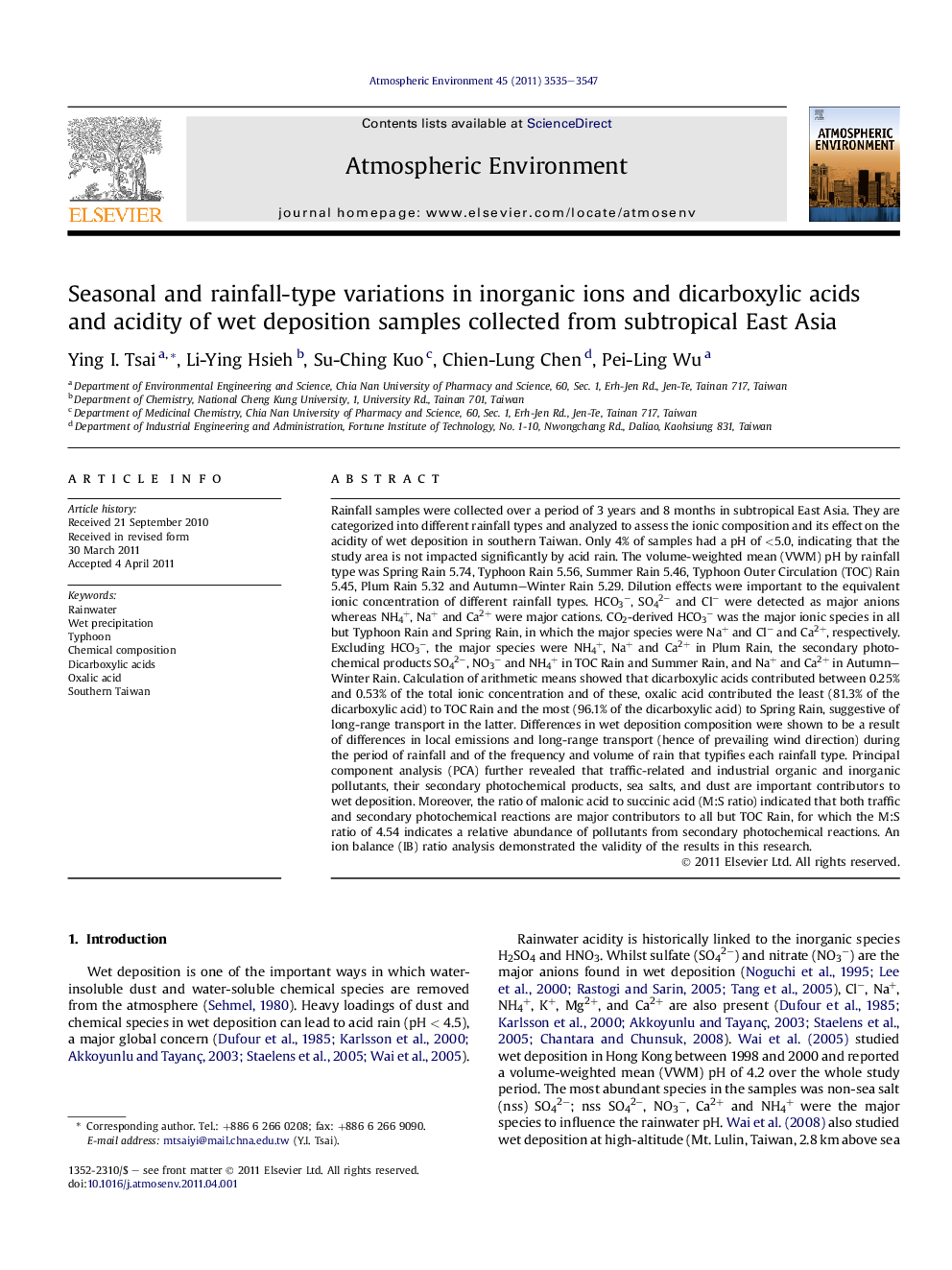| کد مقاله | کد نشریه | سال انتشار | مقاله انگلیسی | نسخه تمام متن |
|---|---|---|---|---|
| 4439461 | 1311020 | 2011 | 13 صفحه PDF | دانلود رایگان |

Rainfall samples were collected over a period of 3 years and 8 months in subtropical East Asia. They are categorized into different rainfall types and analyzed to assess the ionic composition and its effect on the acidity of wet deposition in southern Taiwan. Only 4% of samples had a pH of <5.0, indicating that the study area is not impacted significantly by acid rain. The volume-weighted mean (VWM) pH by rainfall type was Spring Rain 5.74, Typhoon Rain 5.56, Summer Rain 5.46, Typhoon Outer Circulation (TOC) Rain 5.45, Plum Rain 5.32 and Autumn–Winter Rain 5.29. Dilution effects were important to the equivalent ionic concentration of different rainfall types. HCO3−, SO42− and Cl− were detected as major anions whereas NH4+, Na+ and Ca2+ were major cations. CO2-derived HCO3− was the major ionic species in all but Typhoon Rain and Spring Rain, in which the major species were Na+ and Cl− and Ca2+, respectively. Excluding HCO3−, the major species were NH4+, Na+ and Ca2+ in Plum Rain, the secondary photochemical products SO42−, NO3− and NH4+ in TOC Rain and Summer Rain, and Na+ and Ca2+ in Autumn–Winter Rain. Calculation of arithmetic means showed that dicarboxylic acids contributed between 0.25% and 0.53% of the total ionic concentration and of these, oxalic acid contributed the least (81.3% of the dicarboxylic acid) to TOC Rain and the most (96.1% of the dicarboxylic acid) to Spring Rain, suggestive of long-range transport in the latter. Differences in wet deposition composition were shown to be a result of differences in local emissions and long-range transport (hence of prevailing wind direction) during the period of rainfall and of the frequency and volume of rain that typifies each rainfall type. Principal component analysis (PCA) further revealed that traffic-related and industrial organic and inorganic pollutants, their secondary photochemical products, sea salts, and dust are important contributors to wet deposition. Moreover, the ratio of malonic acid to succinic acid (M:S ratio) indicated that both traffic and secondary photochemical reactions are major contributors to all but TOC Rain, for which the M:S ratio of 4.54 indicates a relative abundance of pollutants from secondary photochemical reactions. An ion balance (IB) ratio analysis demonstrated the validity of the results in this research.
► The wet deposition in southern Taiwan was analyzed and categorized.
► Not impacted significantly by acid rain.
► Inorganic ions the vast majority of the total ionic concentration.
► Dicarboxylic acids between 0.25% and 0.53% of the total ionic concentration.
► Important contributors traffic, industrial plus secondary products, sea salts, dust.
Journal: Atmospheric Environment - Volume 45, Issue 21, July 2011, Pages 3535–3547